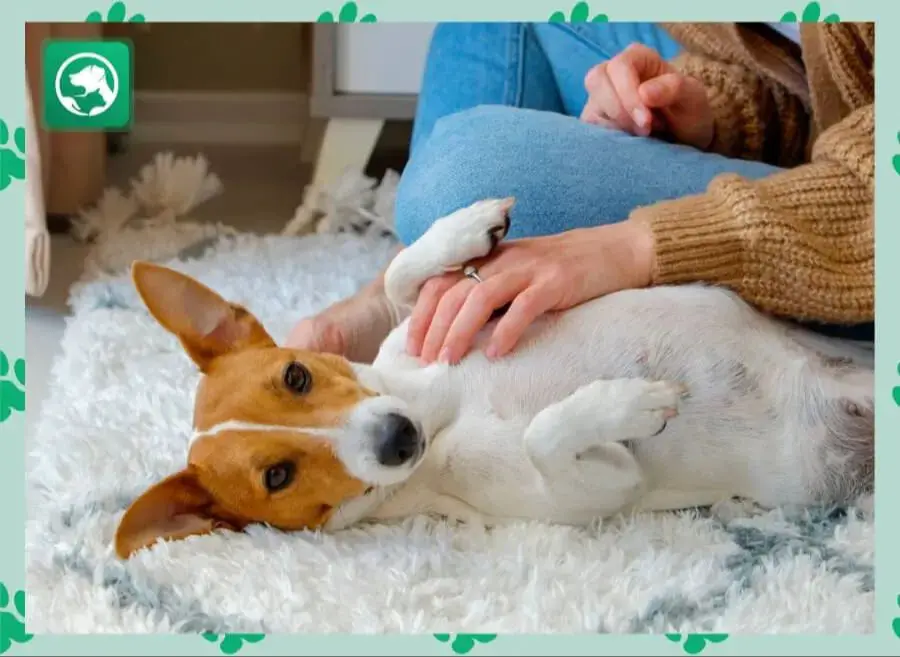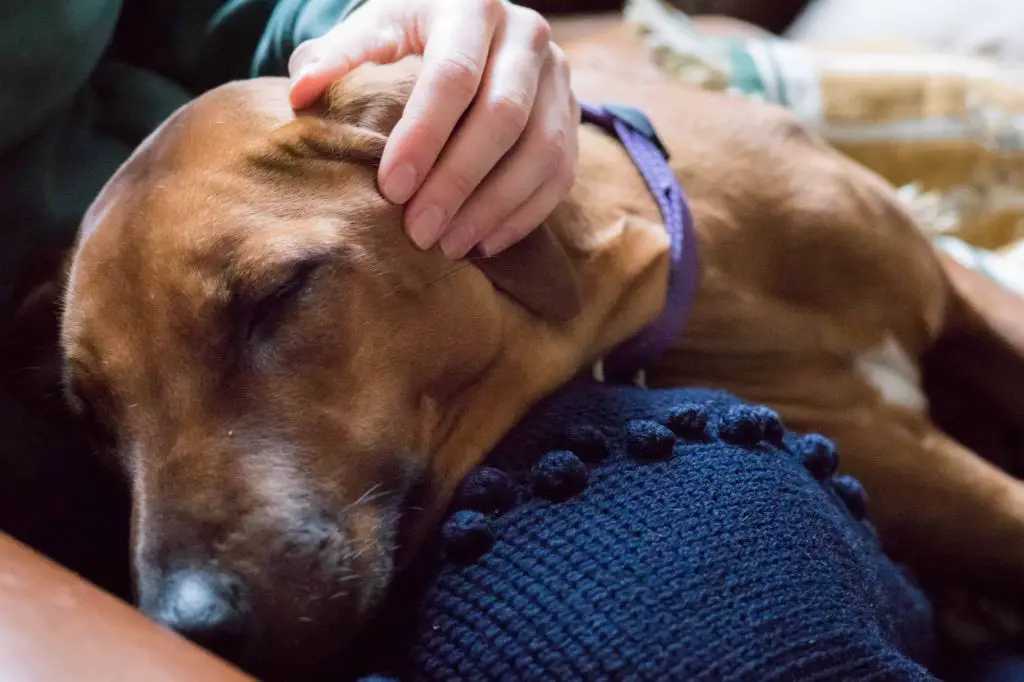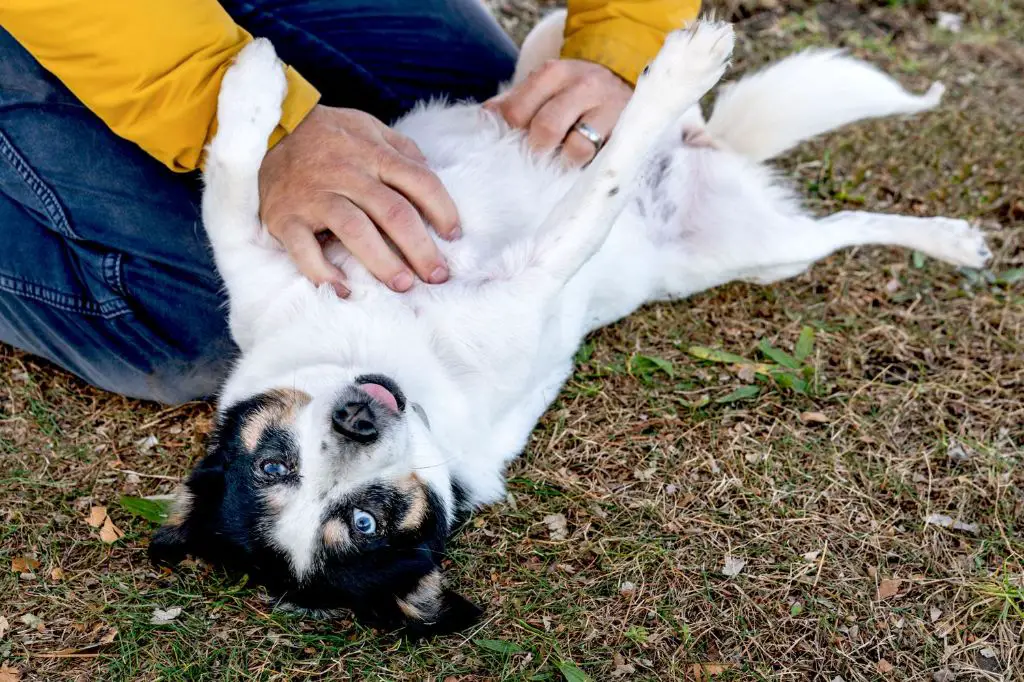Introduction
Belly rubbing is one of the most enjoyable ways for you and your dog to bond and play together. Dogs love having their bellies rubbed. The sensation feels good, shows that you care, and helps strengthen your friendship. With some care and technique, belly rubbing can be rewarding for both you and your pup.
Prepare Your Dog
Before attempting to tickle your dog’s belly, it’s important to make sure they are relaxed and comfortable first. Choose a time when your dog is already calm and content, such as after a walk or while lounging around the house. Timing is key – don’t try to tickle an anxious or excited dog as they may become even more wound up. It’s best to wait until your dog is settled and in a quiet, peaceful mood. You want your dog to feel safe and receptive to a belly tickle.
You can help relax your dog further by providing a comfortable space. Have them lie down on their bed, blanket, or dog pillow in a part of the house they enjoy resting in. Speaking in a soothing tone and petting them gently first can also get your dog ready for a belly tickle. Take the time to make sure your dog is truly at ease before attempting to tickle their belly.
Approach Slowly
When going to tickle your dog’s belly, it’s important to approach slowly and avoid startling them. Sudden movements can frighten your dog and cause them to react defensively. Move calmly and quietly toward your dog, speaking in a gentle, soothing tone of voice. This will help put your dog at ease and let them know your intent is to play, not harm.

Get down on your dog’s level rather than standing over them to seem less threatening. Crouch, kneel, or sit next to your dog before attempting to touch their belly. Take slow, measured movements as you reach your hand out, rather than quick gestures. This gives your dog time to see what you’re doing and realize you don’t mean any harm. Going slow will prevent fearful reactions from your dog.
Start Gently
When you’re ready to move to the belly, start by gently touching their chest or side. Your dog needs to trust that you’ll be gentle around their vulnerable tummy area. Move slowly and cautiously, without sudden movements. Let your hand glide softly over their fur rather than rubbing vigorously. Keep your touch delicate like a feather, gradually letting them get comfortable with belly rubs. Light, careful strokes are the key. It may take a few tries for them to relax and realize you aren’t going to be too rough. Be patient and keep all belly tickles soft and gentle at first.
Move to the Belly
Once your dog seems relaxed and enjoying the attention, you can start to gradually move your hand from their head and neck area down towards their belly. Go slowly and gauge their reaction. If they stiffen up or move away, go back to petting their head or neck to help them relax again. The key is to make sure they are completely comfortable before touching their belly. Their belly is a very sensitive area and you want them to trust that you will be gentle.
As your hand moves closer to their belly, keep your touch soft and strokes gentle. Avoid sudden movements or putting any weight on their belly. The belly rub should feel like a light tickle, not a massage. Watch their body language and listen for any signals like growls or whimpers that could mean they want you to stop or are feeling uncomfortable. If you sense any tension, pause and let them reset before attempting to touch their belly again.
With patience and care, you can gradually acclimate your dog to enjoying a good belly rub. But go at their pace, not yours. The key is making them feel safe and relaxed through each step of the process.
Find the Sweet Spots

When tickling your dog’s belly, pay attention to their reactions to find the areas they enjoy most. Many dogs love having the lower part of their belly scratched and rubbed. The lower belly is where your dog may be particularly sensitive and ticklish.
Try using your fingers to gently scratch, rub or tickle along their lower belly near their hind legs. Watch for their reaction. If their back leg starts kicking or they roll more onto their back, you’ve likely found a sweet spot!
Experiment with light tickling and scratching along their belly to map out where they are most responsive. Finding these extra sweet spots will make the belly tickles even more fun and bonding for both of you.
Keep It Light
Many dogs enjoy a gentle tickle on the belly as it can feel soothing and pleasurable. However, you should always keep the tickling light at first, rather than vigorous rubbing or scratching. Use your fingertips to gently brush the fur over the belly in soft sweeps. Try walking your fingertips playfully across the belly as well. Repeat these light tickles for short intervals of 5-10 seconds, then pause to gauge your dog’s reaction before resuming.

Some dogs may be extremely ticklish around certain spots on their belly. If your dog seems overly sensitive or recoils at a light touch, avoid applying too much pressure in those areas. Each dog is unique in terms of their ticklishness threshold. Gentle tickles are typically preferable to deep rubbing when it comes to a dog’s belly. Use a feather-light touch and brush softly across the fur. This can help avoid overstimulation while still providing an enjoyable sensation.
Watch for Signs
While most dogs love having their bellies rubbed, every dog is different. It’s important to watch your dog’s body language and signals during a belly rub to make sure they are comfortable and enjoying the experience.
If your dog starts to look anxious, steps away, growls, or nips at you, take that as a sign to stop immediately. Your dog may be feeling overstimulated or simply not in the mood. Never force belly rubs if your dog doesn’t want them.
Let your dog take a break if needed. You can try again later when your dog is more relaxed. Pay attention to their signals to learn what they enjoy. Over time, you’ll get better at reading your dog’s particular body language when getting belly rubs.
By respecting your dog’s boundaries and stopping belly rubs if your dog seems uncomfortable, you’ll build more trust and have happier belly rubbing sessions.
End on a Positive Note

Always stop belly tickling while your dog still wants more. Ending the belly rub session before your dog gets tired of it will leave them wanting more next time. Quitting too late can cause your dog to become frustrated or anxious, which can make them reluctant about belly tickling in the future.
Watch your dog’s body language for signs that they have had enough but still want more. Their leg kicking will start to slow down, and they may turn their head or shift their body while keeping their belly exposed. As soon as you notice these signals, stop tickling and pet them calmly for a few seconds, then give them a treat. This will help reinforce that belly tickles are fun playtime with you.
Ending on a positive note ensures your dog continues to enjoy and look forward to belly tickles. It strengthens the bonding experience for both of you. Over time, your dog will learn that you respect their boundaries, making them feel safe and loved.
Repeat Often
Belly tickling is a great way to strengthen the bond between you and your dog. Dogs thrive on positive interactions and affection from their owners. Take the time to tickle your dog’s belly often and make it a regular part of your playtime routine. You’ll notice your dog becoming more energetic, attentive and affectionate as this special time together reinforces your loving relationship.
Aim to tickle your dog’s belly at least a few times a week, if not daily. Set aside 10-15 dedicated minutes per session to really let your dog soak up the bonding experience. The more you make belly tickles a consistent part of your interactions, the closer you’ll become with your furry friend. Your dog will learn to crave this special one-on-one time with you.
Over time, frequent belly tickling sessions will deepen the mutual trust and friendship between you and your dog. So be sure to take advantage of every opportunity for a good belly rub – it’s a simple way to make your dog feel loved while strengthening your lifelong bond.